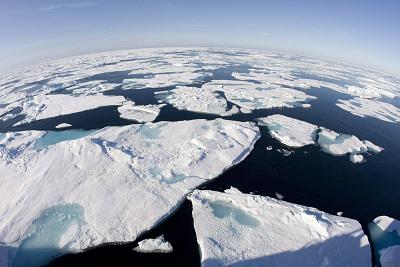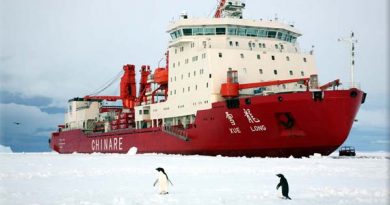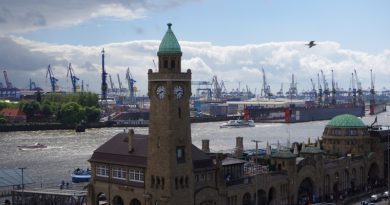Defense diplomacy in the Arctic
 Last week, Canada’s Gen. Walt Natynczyk brought together the chiefs of defence and other senior northern commanders from Canada, the U.S., Russia, Norway, Denmark, Sweden, Finland and Iceland to Canadian Forces Base Goose Bay in Newfoundland and Labrador.
Last week, Canada’s Gen. Walt Natynczyk brought together the chiefs of defence and other senior northern commanders from Canada, the U.S., Russia, Norway, Denmark, Sweden, Finland and Iceland to Canadian Forces Base Goose Bay in Newfoundland and Labrador.
The meeting was intended to provide a forum for discussion on Search and Rescue in the region, but also to enhance communications and relationships amongst the northern neighbours.
Natynczyk has been ambitious in this regard. Only last October, he led a region-wide Table Top Exercise (TTX) on Arctic Search and Rescue (SAR) in Whitehorse.
This was the first meeting of the eight Arctic states on the issue, and a direct outcome of the SAR Agreement that was signed last May at the Arctic Council Ministerial in Nuuk, of which Canada is the depository.
Defense diplomacy
While these meetings have had practical merit, there is a bigger picture value to the gatherings. Amidst the tension, rhetoric and insecurity that has arisen in the Arctic in the past few years, Canada is pursuing defense diplomacy to ensure the region remains stable.
Defense diplomacy is the peacetime cooperative use of armed forces and related infrastructure as a tool of security and foreign policy. While military assistance and cooperation have occurred as long as there have been armed forces, defence cooperation had been, up until the end of the Cold War, primarily about counterbalancing or deterring enemies and supporting friendly regimes. It’s now increasingly used in order to establish a cooperative relationship with potential enemies – a strategic engagement. In this sense, military cooperation is being used not only to support the armed forces and security of allies, but to pursue wider foreign and security policy goals. For circumpolar relations, this inevitably means building relations between Russia on one hand, and everyone else on the other.
In the Arctic, defense diplomacy can be accomplished by:
- symbolizing a willingness to cooperate and work to overcome differences;
- introducing transparency into defense relations;
- reinforcing perceptions of sharing common interests; and
- changing mindsets about who or what is a threat (Andrew Cottey and Anthony Forster wrote about this in 2004).
SAR Agreement
It is widely agreed that the SAR Agreement does not provide much new in the way of a legal and technical framework. But by providing opportunities for cooperation and reinforcing the idea that oil spills, accidents and emergencies are the real security challenges in the Arctic, it is proving to be an excellent platform for defense diplomacy.
Of course, the two SAR forums organized by Canada this past year are not the only efforts at defense diplomacy in the Arctic, although they are the first for the Arctic 8. Probably the best example of defense diplomacy in the Arctic has been the bilateral cooperation between Russia and Norway through the POMOR exercises, with the fourth consecutive iteration beginning next month. Other efforts to engage with Russia in the region include the Barents Rescue Exercises, which also focus on SAR (Russia, Finland, Sweden and Norway); FRUKUS, an international naval exercise that has been occurring since 1988 (Russia, U.K., France and the U.S.); and the Arctic Roundtable 2011, organized by the US European Command and the Norwegian Defense Forces in June 2011 (Russia, USA, Norway, Sweden, Canada, Denmark, Iceland, Finland, UK, France, Germany and the Netherlands).
On the other side of the Atlantic, Natynczyk and General Knud Bartels, the Chief of Defence of Denmark, signed a Memorandum of Understanding on Arctic Defense, Security, and Operational Cooperation in May 2010. Although Canada and Denmark are historic allies, military tensions developed in the early 2000s over a ispute regarding tiny Hans Island, which now, as a sidebar, looks set to be resolved.
It is interesting to note that the Arctic Council expressly prohibits discussion on military security – a footnote in the Declaration that established the Arctic Council in 1996 at a time when the Cold War threat was still top of mind and the Arctic states wanted to develop a mandate devoted to environmental protection and sustainable development. This exception has been the subject of some criticism, especially given the security climate in the region since 2004.
However the Council managed to discuss and negotiate the SAR Agreement despite the exception, and the Arctic states’ militaries have found ways to engage and discuss military issues outside of the Arctic Council. It is getting harder to see what value could be added by moving military discussions outside the hands of Generals to the slow, consensus based, and procedural Arctic Council forum.
At the end of the day, if there was an incident, a miscommunication, or overzealous rhetoric on the part of politicians, the kind of defense diplomacy that occurred in Goose Bay will makes it easier for a Canadian General to pick up the phone to his counterpart in Russia to try to resolve any potential conflict rationally and peacefully. Indeed, this reportedly happened in the infamous Turbot War between Canada and Spain in 1995. As a result, we can expect that the SAR Agreement will not only make the region safer; it will also make it more secure.



